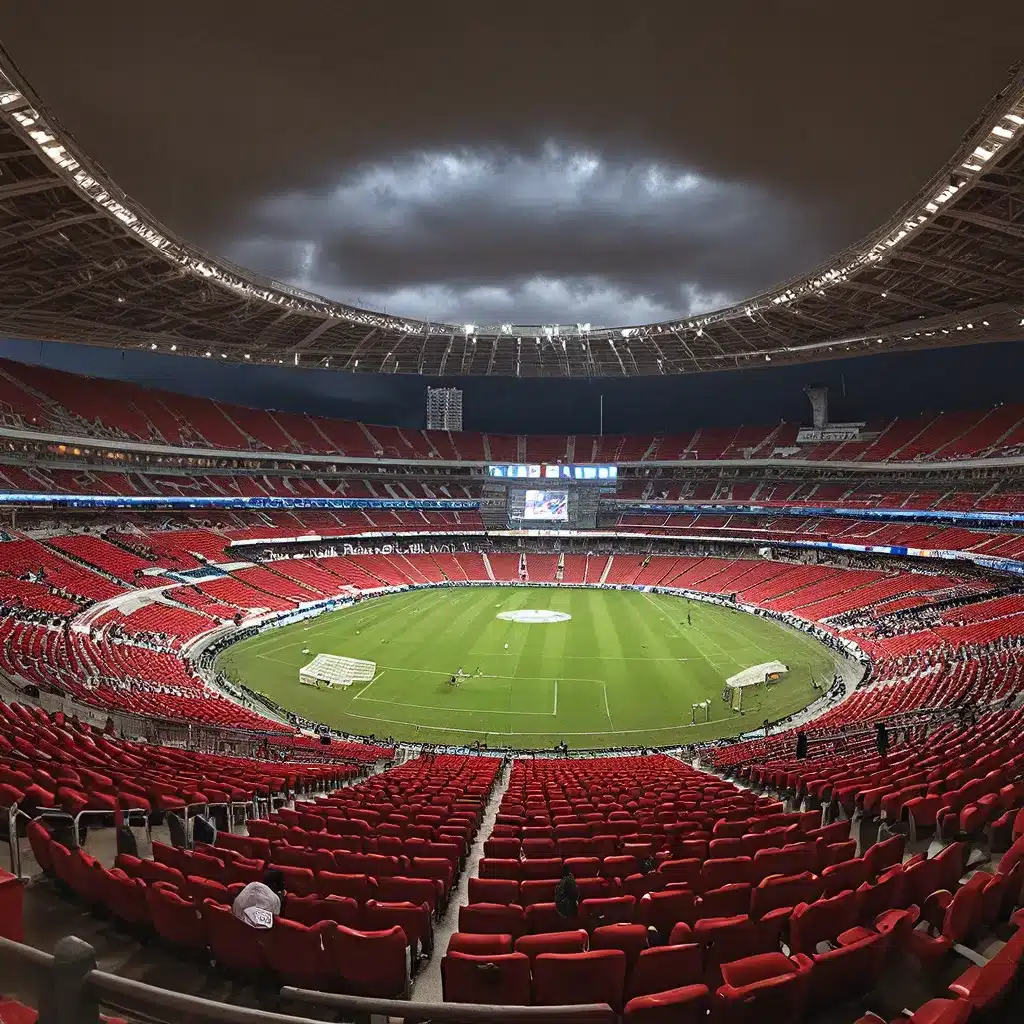
A Stadium Steeped in History and National Pride
The Estadio Nacional de Chile, also known as the National Stadium of Chile, is a renowned sports and entertainment venue located in the heart of Santiago, the vibrant capital city of Chile. This majestic stadium, which has played a significant role in the country’s history, stands as a testament to the passion and resilience of the Chilean people.
Constructed in the 1930s, the Estadio Nacional de Chile was originally designed as a state-of-the-art facility to host the 1936 Summer Olympics. However, due to Chile’s withdrawal from the games, the stadium’s grand opening was delayed until 1938. From that moment on, it has become the centerpiece of the nation’s sporting and cultural landscape, hosting a wide range of events, from international football (soccer) matches to concerts and political gatherings.
One of the stadium’s most notable and somber moments in history occurred during the military coup d’état of 1973, when the Estadio Nacional de Chile was transformed into a detention and torture center for political prisoners. This dark chapter in the stadium’s history serves as a poignant reminder of the struggles and resilience of the Chilean people.
Architectural Grandeur and Functionality
The Estadio Nacional de Chile is a true architectural marvel, boasting a design that seamlessly blends functionality and aesthetic appeal. The stadium’s imposing concrete structure and distinctive horseshoe-shaped stands create an impressive visual impact, while the carefully crafted details and attention to design elements contribute to the overall sense of grandeur.
One of the stadium’s standout features is its seating capacity, which can accommodate up to 47,000 spectators, making it one of the largest stadiums in Chile. The venue’s multi-tiered design and strategic placement of the stands ensure that every seat offers an unobstructed view of the action, whether it’s a football match, a concert, or a cultural event.
In addition to its impressive size and seating capacity, the Estadio Nacional de Chile is also renowned for its cutting-edge facilities and amenities. The stadium boasts modern locker rooms, well-equipped press facilities, and a range of hospitality and VIP areas that cater to the needs of athletes, media, and high-profile guests.
Hosting a Diverse Array of Events
Over the decades, the Estadio Nacional de Chile has played host to a remarkable variety of events, solidifying its status as a true cultural and sporting hub within the country.
Football (soccer) matches, both domestic and international, have been a staple at the stadium, with the Chilean national team and local clubs regularly taking to the pitch to the delight of passionate fans. The venue has also welcomed some of the world’s most renowned football clubs, including international powerhouses like Real Madrid and Barcelona, further cementing its reputation as a premier destination for the sport.
Beyond football, the Estadio Nacional de Chile has also played a significant role in the country’s cultural and political history. The stadium has been the site of important national ceremonies, such as the inauguration of presidents, as well as large-scale political rallies and demonstrations. Additionally, the venue has hosted a diverse array of musical acts and concerts, ranging from local Chilean artists to international superstars, providing entertainment and cultural enrichment for the people of Santiago and beyond.
Ongoing Renovations and Modernization
In recent years, the Estadio Nacional de Chile has undergone a series of major renovations and upgrades to ensure that it continues to meet the evolving needs of athletes, spectators, and event organizers.
One of the most significant projects was the installation of a state-of-the-art retractable roof in 2014, which allows the stadium to host events year-round, regardless of weather conditions. This innovative addition has further enhanced the Estadio Nacional de Chile’s versatility and ability to accommodate a wide range of events.
Additionally, the stadium has undergone extensive renovations to its seating areas, concession stands, and other public amenities, ensuring a comfortable and enjoyable experience for all who visit. These upgrades have helped to modernize the venue and solidify its reputation as one of the premier sports and entertainment facilities in Chile.
Embracing the Future with Sustainable Initiatives
As the Estadio Nacional de Chile continues to evolve, it has also embraced a commitment to environmental sustainability and social responsibility. The stadium has implemented a range of eco-friendly initiatives, such as energy-efficient lighting systems and water conservation measures, demonstrating its dedication to reducing its carbon footprint and promoting sustainable practices.
Furthermore, the Estadio Nacional de Chile has also taken steps to enhance accessibility and inclusivity for all visitors. This includes the installation of wheelchair-accessible seating areas and the provision of sensory rooms for individuals with special needs, ensuring that the stadium is a welcoming and inclusive space for all.
A Legacy of Excellence and Enduring Significance
The Estadio Nacional de Chile stands as a true testament to the resilience and pride of the Chilean people. From its humble beginnings as a proposed venue for the 1936 Olympics to its current status as a beloved and iconic landmark, the stadium has weathered both triumphs and tragedies, but has emerged as a symbol of the country’s unwavering spirit.
As the Estadio Nacional de Chile continues to evolve and adapt to the changing needs of the modern era, it remains a cherished and integral part of Chile’s cultural and sporting landscape. Whether hosting a thrilling football match, a captivating musical performance, or a significant national event, this majestic stadium continues to captivate and inspire all who step through its gates.
For those seeking to explore the rich history and grandeur of Chile’s most iconic stadium, a visit to the Estadio Nacional de Chile is a must-do experience, offering a unique opportunity to connect with the nation’s past, present, and future.

